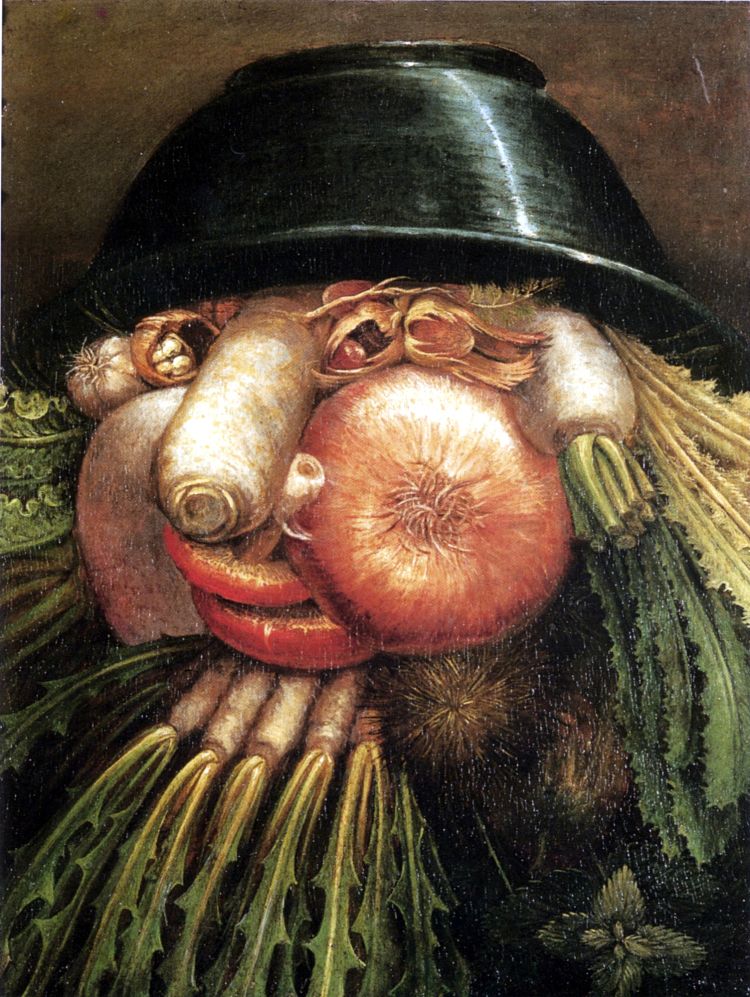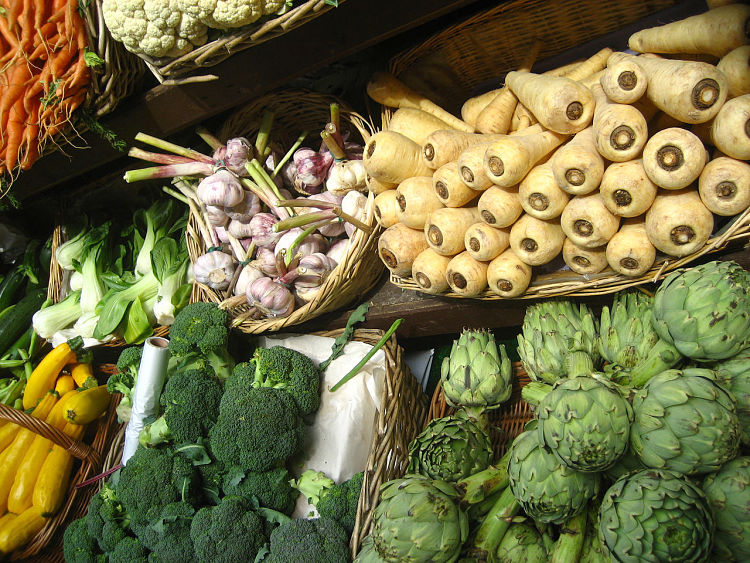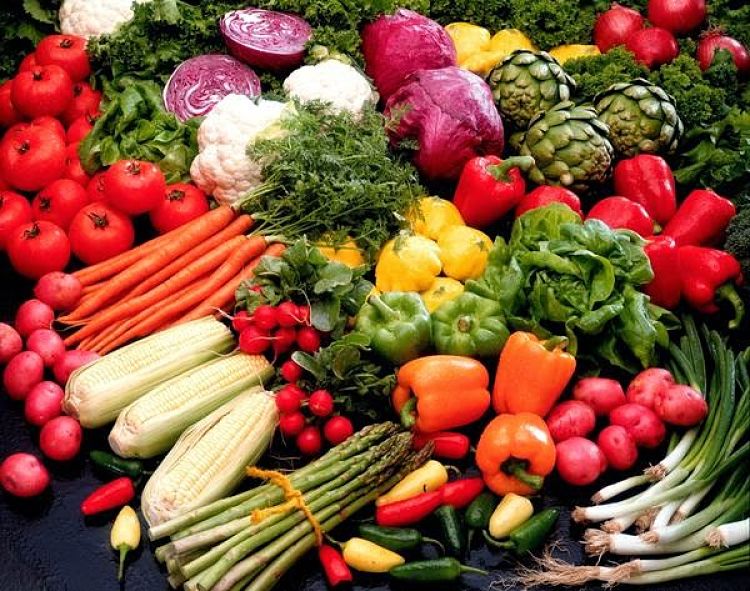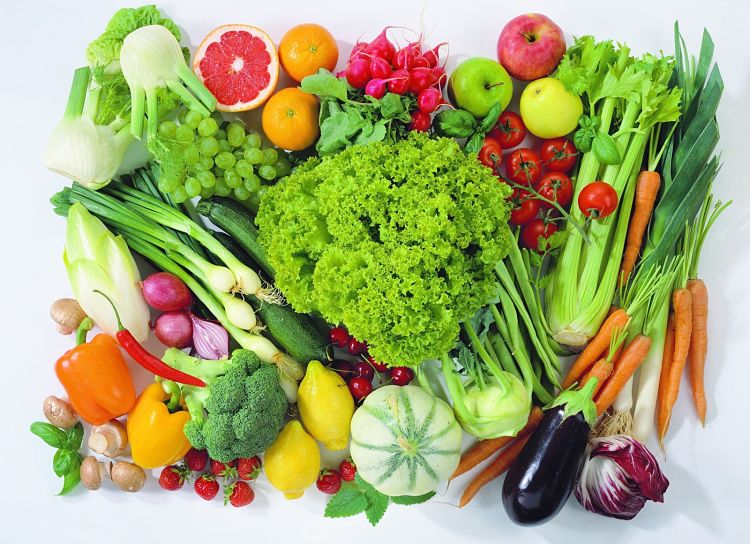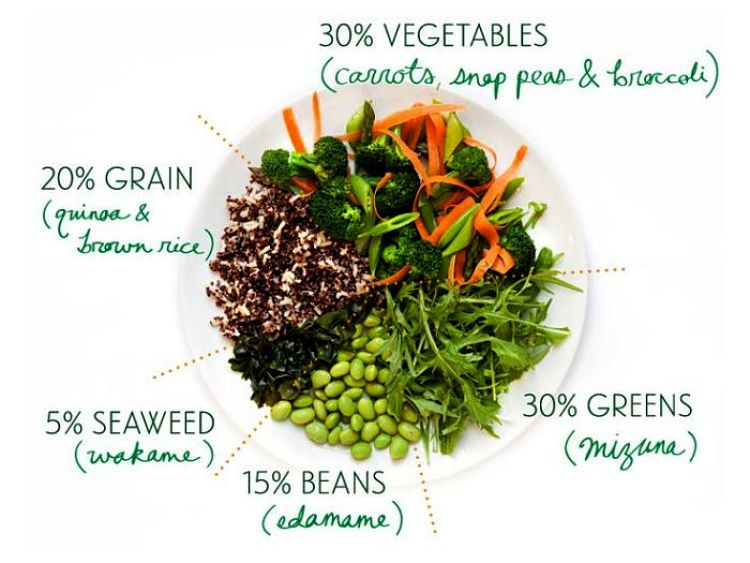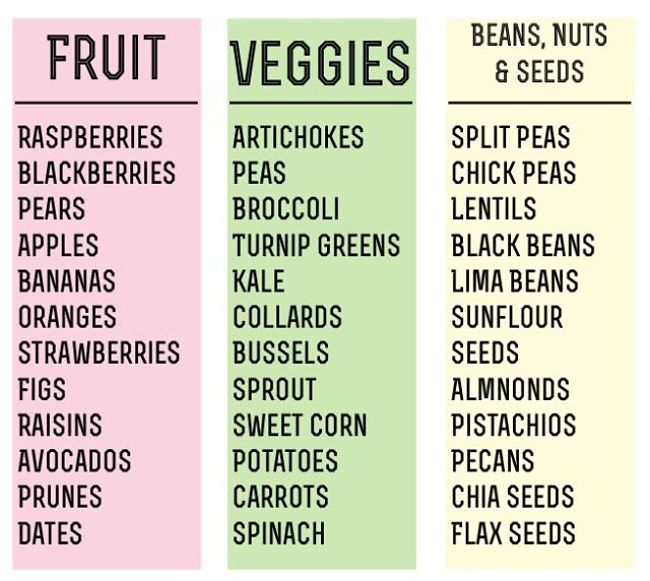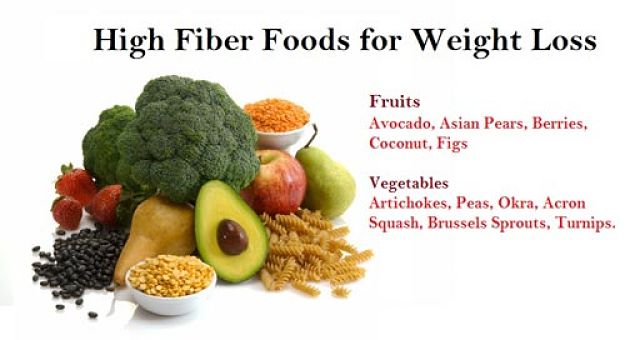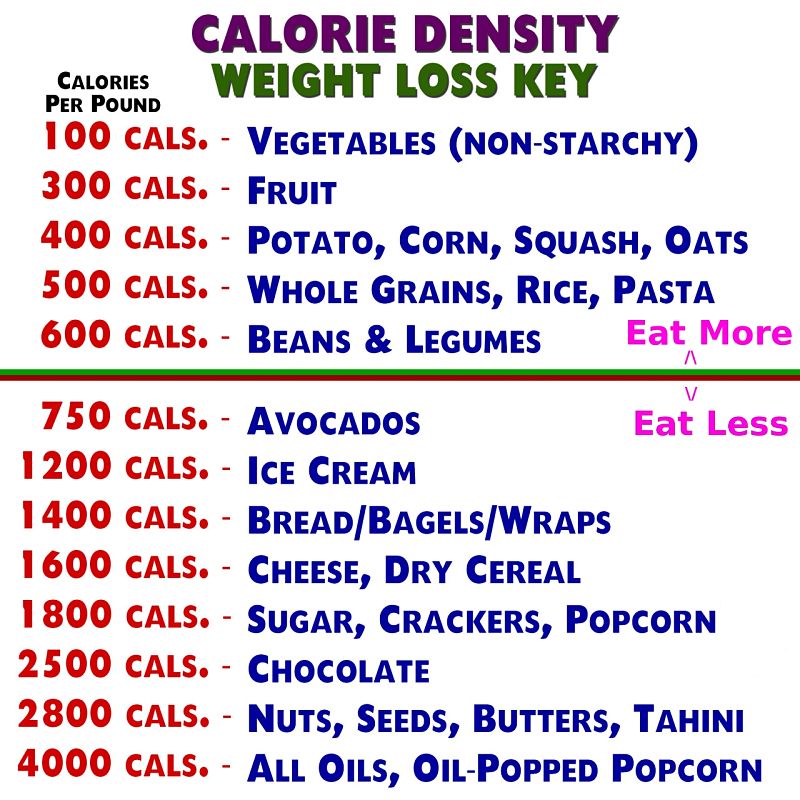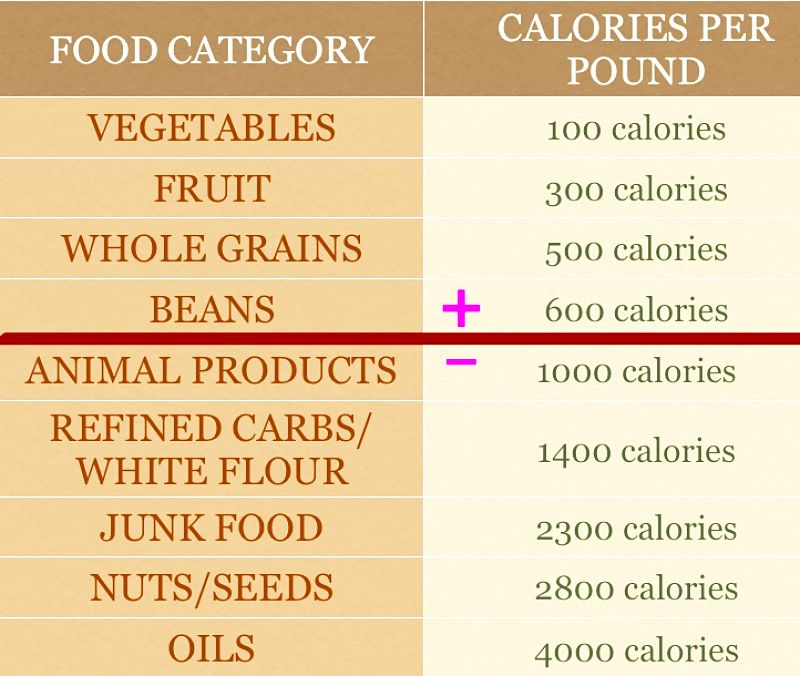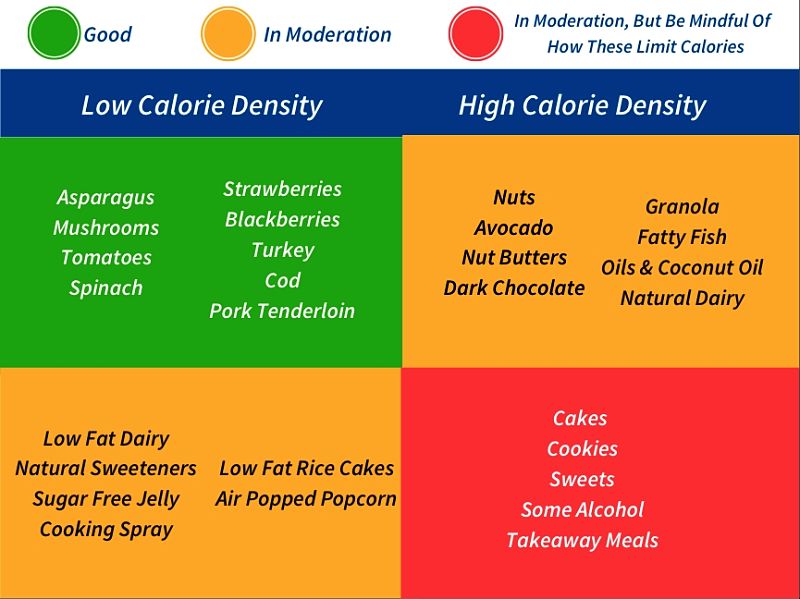Best Vegetables for Weight Loss - Low Calorie Density and High Fiber
We've all read the advice that we should all be eating more unprocessed vegetables, especially when we are trying to lose weight.
The new MyPlate guide recommends that fruit and vegetables should represent half the 'plate' at every meal.
The old Food Guide Pyramid suggested that children especially should be eating 3-5 servings of vegetables a day. This should include plenty of variety and at least one dark green and one orange vegetable each day.
For weight loss programs, vegetables are valuable not only for their nutrients and fiber, but also because they provide bulk when substituted for carbohydrates and high-fat protein foods (Calorie Density).
Research has shown that the world-wide obesity epidemic is simply due the most people unwittingly eating too much highly processed foods that are jam-packed with calories and fat.
Substituting fresh vegetables for other foods, can help to reduce the amount of calories, carbohydrates and fat consumed. This can be very helpful for weight loss programs.
However, fresh vegetables can be expensive and so how can you ensure that you are getting enough 'bangs for your bucks'.
This article examines what criteria to use when choosing the best vegetables for weight loss programs and for those wanting to get the most benefits for the vegetables they consume.
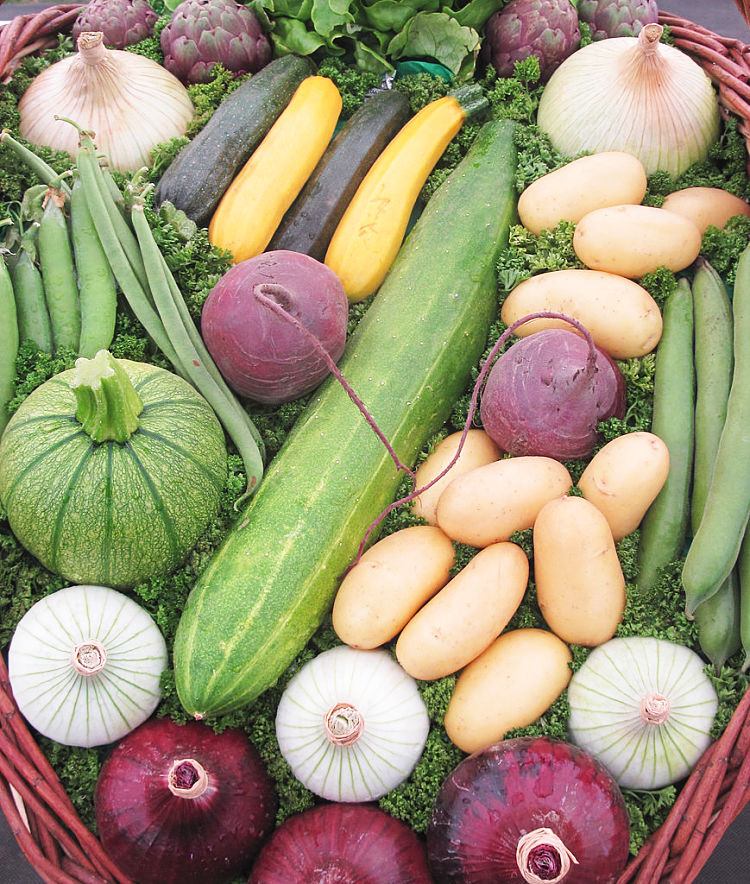
General Advice for Choosing Vegetables
- Fresh vegetables are always the best choice, but supplies are seasonal. Next best is frozen, then canned, both entailing some loss of nutrients.
- Choose prepared vegetables that don't have bread or batter coverings or rich sauces.
- Buy frozen pre-bagged vegetables such as leafy greens, baby carrots, peas, Asian vegetables or green beans. These vegetable items can be which can be quickly added to a salad, mail meal, as a side dish, or included in a stir-fry, curry or casserole.
- Juice from vegetables is a good way to increase consumption, but means that less fiber will be consumed. Making your own juice, or adding fresh vegetables to smoothies can be a better alternative.
- The way the vegetables are cooked is extremely important - don't boil the vegetables, which destroys many nutrients and leaves the others behind in the cooking water that you throw down the kitchen sink.
- Skip the French fries and other deep-fried vegetables like zucchini sticks, tempura and onion rings. Choose a whole baked potato (including the skin), sweet potato, or a salad with a lot of variety instead.
- Try to eat more raw vegetables.
- Be aware that many products that have "vegetable" on their packaging or in their names may be alien foods rather than natural food. Many processed so-called vegetable items on the supermarket shelves contain large amounts of fat, carbohydrate, salt and sugar or are very high in salt. Fruit candies, fruit jams, sauces, vegetable chips, vegetable spreads, ketchup and many vegetable based drinks have dubious value and do not count in terms of getting your daily quota of vegetables.
Best Vegetables in Terms of Calorie Density
Calorie Density is simply the relative number of calories in a given volume of food. It is a way of measuring the bulk of the food. Choosing a vegetable with a low calorie density will mean that you will feel full and will be less likely to consume other high calorie foods. Dietary fiber is a component of this, but many foods with low calorie density do not have particularly high fiber contents. Fiber tends to be broken down slowly or resists digestion so that you 'feel fuller for longer'.
The table below shows a list of vegetables ranked by calorie density (lowest first). Tomatoes are included here because, while strictly a 'fruit', most people eat them as vegetables. Tomatoes are a wonderful health food. The vegetables listed first have the smallest number of calories in a standard volume of 100 ml. The calories in 100 g of these vegetables is also shown.
The best fruits for this category are:
- Collard leaves & stems
- Cabbage, shredded
- Kohlrabi
- Beet greens
- Tomato, ripe red
- Asparagus
- Mustard greens
- Yellow snap bean
- Fennel
- Turnip greens
- Spinach, raw
- Sweet green pepper
- Eggplant
Vegetables with the Lowest Number of Calories per Volume (Calorie Density)
|
Food
|
Cal/100g
|
Cal/100ml
|
|---|---|---|
|
Collard leaves & stems
|
40
|
12
|
|
Cabbage, shredded
|
18
|
13
|
|
Kohlrabi
|
29
|
13
|
|
Beet greens
|
24
|
14
|
|
Tomato, ripe red
|
22
|
15
|
|
Asparagus
|
23
|
15
|
|
Mustard greens
|
31
|
16
|
|
Yellow snap bean
|
27
|
16
|
|
Fennel
|
28
|
17
|
|
Turnip greens
|
28
|
17
|
|
Spinach, raw
|
26
|
18
|
|
Sweet green pepper
|
22
|
18
|
|
Eggplant
|
25
|
20
|
|
Pumpkin
|
26
|
20
|
|
Mung bean sprouts
|
35
|
21
|
|
Turnip
|
30
|
21
|
|
Okra
|
36
|
22
|
|
Pepper, Sweet red
|
31
|
22
|
|
Kale leaves & stems
|
38
|
23
|
|
Onion, green
|
36
|
23
|
|
Red cabbage
|
31
|
25
|
|
Winter squash
|
50
|
25
|
|
Green snap bean
|
32
|
26
|
|
Beet
|
43
|
30
|
|
Bamboo Shoots
|
27
|
31
|
|
Carrots, raw
|
46
|
32
|
|
Brussels sprouts
|
45
|
36
|
|
Leek
|
52
|
36
|
|
Celeriac
|
40
|
39
|
Vegetables Containing the Highest Dietary Fiber for a 100g Serve
The table shown the vegetable with the fiber contents per 100g.
The top 15 vegetables for Fiber were:
- tomatoes (sundried)
- grape leaves(raw)
- fireweed, leaves (raw)
- artichoke (raw)
- taro (cooked)
- lotus root (raw)
- parsnips (raw)
- squash, winter, acorn (baked)
- horseradish-tree, pods (cooked)
- chicory greens (raw)
- taro (raw)
- lambsquarters (raw)
- yam (cooked)
- Brussels sprouts (raw)
- beet greens (raw)
Vegetables with the Highest Amount of Fiber (g)
|
Fiber in 100g Serve
|
Dietary Fiber (g)
|
|---|---|
|
tomatoes (sundried)
|
12.59
|
|
grape leaves(raw)
|
10.71
|
|
fireweed, leaves (raw)
|
10.43
|
|
artichoke (cooked)
|
8.58
|
|
wasabi, root (raw)
|
7.85
|
|
artichoke (raw)
|
5.39
|
|
taro (cooked)
|
5.15
|
|
lotus root (raw)
|
4.94
|
|
parsnips (raw)
|
4.81
|
|
squash, winter, acorn (baked)
|
4.39
|
|
horseradish-tree, pods (cooked)
|
4.24
|
|
chicory greens (raw)
|
4.14
|
|
taro (raw)
|
4.04
|
|
lambsquarters (raw)
|
4
|
|
yam (cooked)
|
3.97
|
|
Brussels sprouts (raw)
|
3.75
|
|
beet greens (raw)
|
3.68
|
|
collards (raw)
|
3.61
|
|
parsnips (cooked)
|
3.59
|
|
taro leaves (raw)
|
3.57
|
|
kohlrabi (raw)
|
3.56
|
|
turnip greens (cooked)
|
3.47
|
|
dandelion greens (raw)
|
3.45
|
|
eggplant (raw)
|
3.41
|
|
broccoli (cooked)
|
3.33
|
|
sweet potato (baked, with skin)
|
3.33
|
|
squash, winter, butternut (baked)
|
3.22
|
|
burdock root (raw)
|
3.22
|
|
mustard greens (raw)
|
3.21
|
|
chrysanthemum, garland (raw)
|
3.2
|
|
endive (raw)
|
3.2
|
|
okra (raw)
|
3.2
|
|
horseradish-tree, pods (raw)
|
3.2
|
|
lotus root (cooked)
|
3.17
|
|
cabbage, savoy (raw)
|
3.14
|
|
water chestnuts, chinese (raw)
|
3.06
|
|
sweet potato (raw)
|
3
|
|
fennel, bulb (raw)
|
2.99
|
|
saiuerkraut (canned)
|
2.96
|
|
carrots (cooked)
|
2.95
|
|
beet greens (cooked)
|
2.92
|
|
carrots, baby (raw)
|
2.88
|
|
dandelion greens (cooked)
|
2.86
|
|
dock (raw)
|
2.86
|
|
collards (cooked)
|
2.84
|
|
broccoli raab (cooked)
|
2.8
|
|
onions, spring or scallions (raw)
|
2.8
|
|
beets (raw)
|
2.79
|
Vegetables with Lowest Calories per 100g Serving
The table shown below lists the best fruits for various other criteria that is important for weight loss and dieting.
The Best Vegetables with the lowest calories per 100g are:
- arugula
- cress; garden
- turnip greens
- taro shoots
- bamboo shoots
- cabbage; Chinese
- watercress
- lettuce; butterhead
- cabbage; napa
- cabbage; Chinese
- gourd;white-flowered
- lettuce; iceberg
- mustard greens
- taro shoots
- nopales
- tomato
- radishes
- squash; summer
- endive
- celery
Vegetables with the Highest Ratio of Protein to Fat
Foods with low fat, but high protein are important for vegetarians, and especially vegans who must get all their protein and amino acids from plants
The Vegetables with the highest ratio of protein to fat are:
- gourd; white-flowered
- sweet potato
- lotus root
- watercress
- shallots
- chard; swiss
- artichoke
- arrowhead
- potato
- okra
- cabbage; savoy
- potato, skin removed
- asparagus
- beet greens
- kohlrabi
- water chestnuts
Vegetables with the Best Combination of Macro Nutrients
This ranked list of vegetables has been derived by using a formula that gave a positive weighting for protein and fiber, but a negative weightings for calories, fat and carbohydrate. The contribution of each of these macro nutrients was standardized.
The best Vegetables for Overall Macro Nutrient contents were:
- peppers; sweet; red
- tomatoes; sundried
- peppers; sweet; green
- onions; yellow
- cassava
- rhubarb
- palm hearts
- potato; microwaved
- taro
- arrowhead
- gourd; dishcloth
- potato; baked
- shallots
- burdock root
- potato, skin removed
- yam
- corn; sweet; yellow
- arrowhead
Vegetables with the Best Combination of Vitamins
The contents of all the major vitamins were used to produce this listing. Equal weightings were used for the major vitamins such as C, A, K, D and the B group vitamins.
The best Vegetables for overall content of Vitamins were:
- spinach
- mustard greens
- chrysanthemum; garland
- collards
- asparagus
- endive
- lettuce; cos or romaine
- taro leaves
- turnip greens
- fireweed; leaves
- chicory greens
- grape leaves
- broccoli
- beets
- collards
- artichoke
- broccoli
- okra
- amaranth leaves
- cabbage; savoy
- beets
- tomatoes
How to Use Vegetables to Lose Weight
Losing weight is not rocket science - it is mostly will power and reduction in amount eaten rather than fancy diets. The key aspect is that you need to change your lifestyle and eating habits for the longer term. Most diets fail because people lose weight and then put it all back on when they enter the 'maintenance phase'.
- Monitor your weight loss progress with a good online tool
- Try Intermittent fasting including 'skipping lunch'
- Replace processed food with whole fresh foods
- Your probably at because you eat too much, not deliberately but because the Western Diet contains highly processed foods that are calorie and fat bombs.
Best Vegetables for Weight Loss for Various Criteria
|
Serving 100 g
|
Calories
|
Highest Protein vs Fat Level
|
Protein to Fat ratio
|
Best Macro Nutrients
|
Best Vitamins
|
|---|---|---|---|---|---|
|
arugula
|
4
|
gourd;white-flowered
|
36
|
peppers; sweet; red
|
spinach
|
|
cress; garden
|
11
|
sweet potato
|
29
|
tomatoes; sundried
|
mustard greens
|
|
turnip greens
|
12
|
lotus root
|
26
|
peppers; sweet; green
|
chrysanthemum; garland
|
|
taro shoots
|
12
|
watercress
|
26
|
onions; yellow
|
collards
|
|
bamboo shoots
|
12
|
shallots
|
25
|
cassava
|
spinach
|
|
cabbage; Chinese
|
12
|
chard; swiss
|
24
|
rhubarb
|
asparagus
|
|
watercress
|
12
|
artichoke
|
22
|
palm hearts
|
endive
|
|
lettuce; butterhead
|
13
|
arrowhead
|
21
|
potato; microwaved
|
lettuce; cos or romaine
|
|
cabbage; napa
|
13
|
potato; russet
|
21
|
taro
|
taro leaves
|
|
cabbage; Chinese
|
13
|
potato; microwaved
|
21
|
arrowhead
|
turnip greens
|
|
gourd;white-flowered
|
14
|
okra
|
20
|
gourd; dishcloth
|
fireweed; leaves
|
|
lettuce; iceberg
|
14
|
cabbage; savoy
|
20
|
potato; baked
|
chicory greens
|
|
mustard greens
|
14
|
potato; baked
|
20
|
shallots
|
grape leaves
|
|
taro shoots
|
14
|
potato; steamed
|
19
|
burdock root
|
broccoli
|
|
nopales
|
15
|
cabbage; savoy
|
19
|
potato; steamed
|
beets
|
|
gourd; white-flowered
|
15
|
potato, skin removed
|
18
|
potato, skin removed
|
collards
|
|
tomato; yellow
|
15
|
asparagus
|
18
|
potato; white
|
radish seeds
|
|
radishes
|
16
|
potato
|
17
|
potato; red
|
artichoke
|
|
squash; summer; scallop
|
16
|
beet greens
|
17
|
yam
|
broccoli; leaves
|
|
squash; summer; zucchini; with skin
|
16
|
kohlrabi
|
16
|
corn; sweet; yellow
|
okra
|
|
endive
|
16
|
potato; red
|
15
|
potato; russet
|
amaranth leaves
|
|
tomato; orange
|
16
|
water chestnuts; chinese
|
15
|
arrowhead
|
broccoli raab
|
|
celery
|
16
|
nopales
|
14
|
corn; sweet; yellow
|
cabbage; savoy
|
|
nopales
|
16
|
purslane
|
14
|
potato
|
beets
|
|
purslane
|
16
|
sweet potato leaves
|
14
|
water chestnuts; chinese
|
tomatoes
|
|
cardoon
|
17
|
potato; white
|
14
|
chicory roots
|
mustard greens
|
|
lettuce; cos or romaine
|
17
|
mustard greens
|
14
|
corn; sweet; white
|
broccoli raab
|
|
squash; summer; zucchini; with skin
|
18
|
palm hearts
|
14
|
taro
|
lettuce; butterhead
|
|
tomato; red
|
18
|
sweet potato
|
13
|
squash; winter; hubbard
|
broccoli; flower clusters
|
|
squash; summer; scallop
|
18
|
Brussels sprouts
|
11
|
squash; winter; spaghetti
|
turnip greens
|
|
squash; summer; crookneck and straightneck
|
19
|
fiddlehead ferns
|
11
|
radish seeds
|
broccoli; stalks
|
|
chard; swiss
|
19
|
onions
|
11
|
sweet potato; without skin
|
cabbage; Chinese
|
|
peppers; sweet; green
|
20
|
squash; winter; butternut
|
10
|
sweet potato
|
artichoke
|
|
gourd; dishcloth
|
20
|
taro shoots
|
10
|
corn; sweet; white
|
cardoon
|
|
asparagus
|
20
|
squash; winter; butternut
|
10
|
leeks
|
parsnips
|
|
beet greens
|
21
|
burdock root
|
10
|
sweet potato
|
onions; spring or scallions
|
